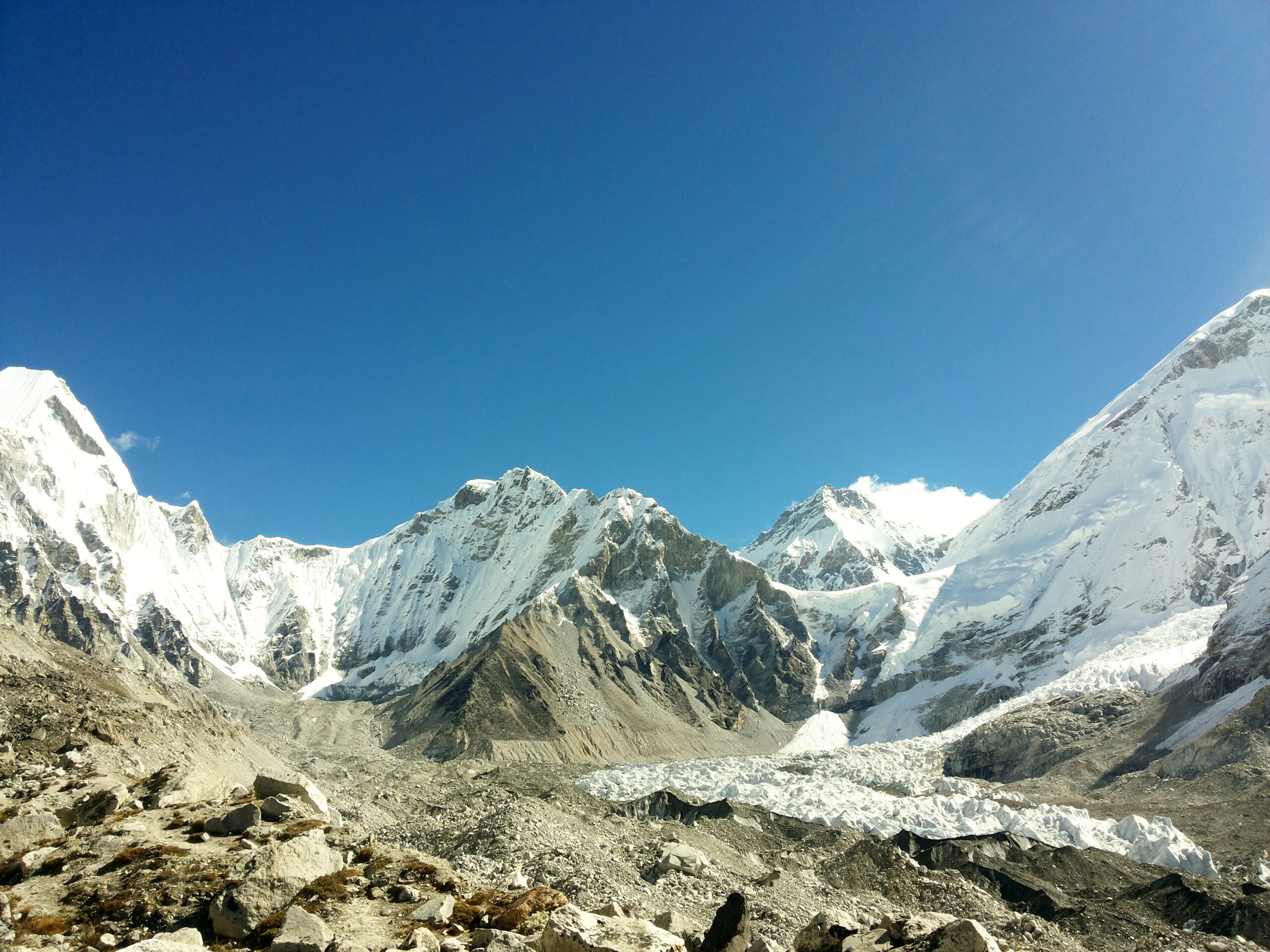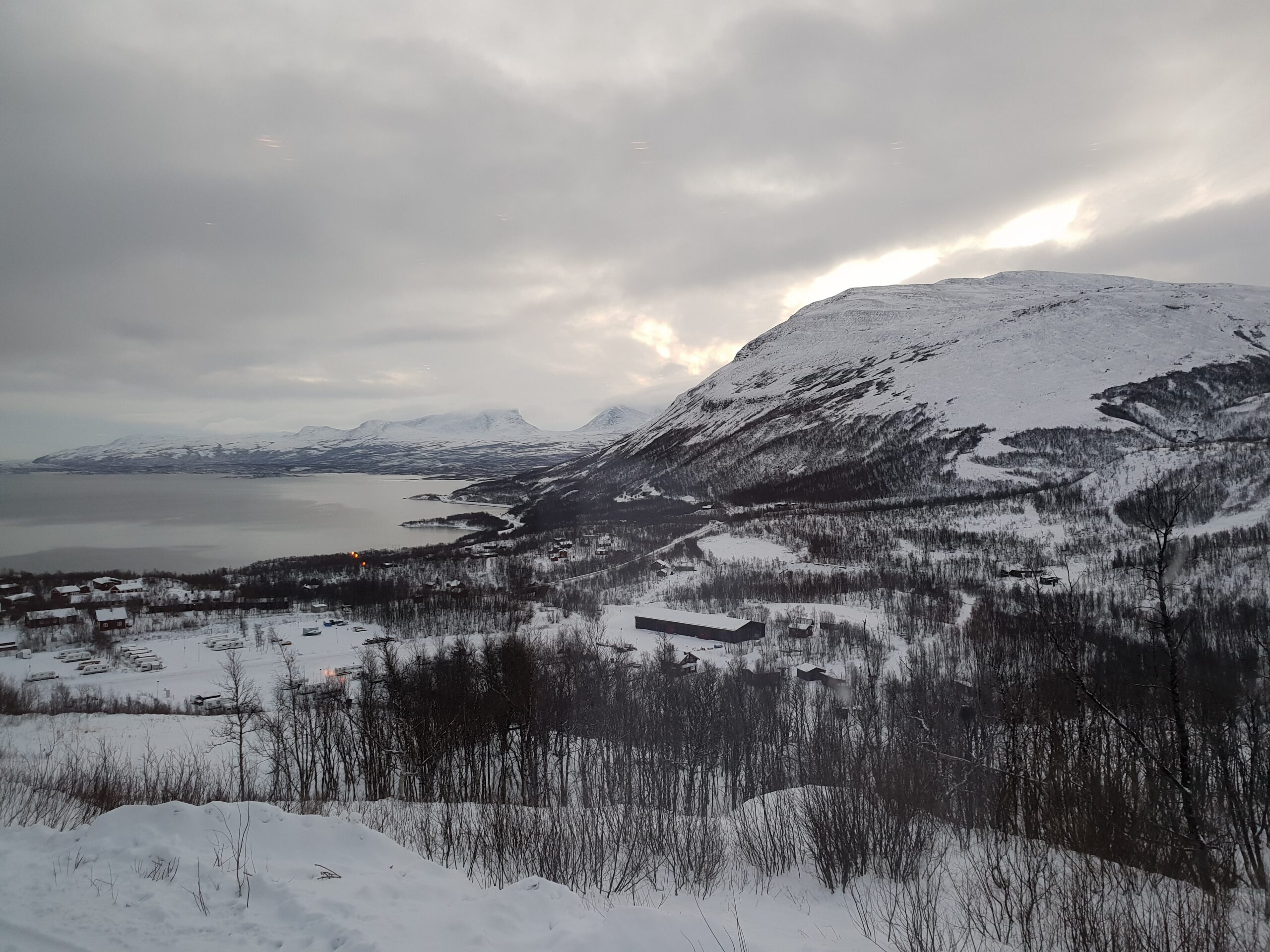It was our fourth day on the trek and it was a rest day which meant, we would not trek for long hours but instead do short treks to a higher altitude to acclimatize and sleep at a lower altitude. It was based on the golden rule of climbing – Above 3000 m, do not climb more than 300 m per day and for every 900 m climbed, take a rest day.
Altitude sickness is a very important consideration while climbing the Himalayan peaks. An elevation of over 2500 m is considered high altitude and above 3600 m is very high altitude and above 5500 m is extreme high altitude. One cannot predict how the human body responds to altitude and its extremely critical to climb slowly at a pace one is comfortable with and hydrate oneself well (3-4 liters of water per day). Altitude sickness is caused by a lower concentration of oxygen; at sea level, the concentration of oxygen is 21% (at barometric pressure of 760 mmHg) and at 3600 m, there is 40% fewer molecules of oxygen (at barometric pressure of 483 mm Hg). Now, the body needs to adjust to lower levels of oxygen. In addition, due to reasons unknown, at high altitudes, fluid leaks from the capillaries leading to fluid collection in the lungs and brain which can have serious consequences like High altitude pulmonary edema (HAPE) or High altitude cerebral edema (HACE), both of which are life threatening.
Acute Mountain Sickness (AMS) can cause headaches, dizziness, fatigue and tiredness, nausea and vomiting, sleeplessness, disorientation and lack of appetite and if any of the symptoms show up, the only option is to not climb higher and if the symptoms persist, to immediately climb down to a lower altitude. A good acclimatization process can help alleviate altitude sickness. This requires one to climb slowly at a pace one is comfortable with, drinking at least 3-4 l of water a day, avoiding alcohol, sleeping pills and smoking and adhering to the golden rules of high altitude climbing.
One can use prophylaxis such at Diamox (Acetazolamide) to help cope with altitude and prevent AMS. This drug does not mask the symptoms of AMS, instead makes the blood more acidic and this in turn increases ventilation thus helping the body to better cope with the altitude. Diamox does have its side effects such as tingling sensation in the fingers, toes and face, excessive urination and blurring of vision. Dexamethasone and Nifedipine are typically used in the treatment of HACE & HAPE.
There are several other herbal alternatives available to cope with altitude – In South America, Coca leaf tea is used to prevent altitude sickness. Ginkgo Biloba is another herbal supplement that can help cope with altitude. The alternate medicines haven’t been researched as much and one cannot vouch for their efficacy. It’s extremely critical to follow the golden rules of high altitude climbing.
We heard from a lot of trekkers that they had started taking a 250 mg dosage of diamox everyday right at Namche Bazaar to cope with the altitude. We did have supplies of every possible medicine for altitude related illness in our first aid kit but had not started taking any of it. All of us seemed to be coping well with altitude and were not tired from a full day of trekking and we decided, we will look at taking medicines if we had symptoms.
Having expatiated at length on altitude related illness and the need for a rest, it’s time to look at what our rest day actually looked like. It was a lazy start with a heavy breakfast and lots of tea. We were to go to Hotel Everest View from where we would get our first glimpse of Mt. Everest. There was a bit of a drizzle and we were wondering if we would get to see Mt. Everest at all. Heading out of Camp Davis, it was a steep climb on stone steps to head out of Namche Bazaar. There was a large prayer wheel with bells that rang every time the wheel completed a circuit. There were several other smaller prayer wheels along the route. We could see school children playing football in a large football field. The sun was out and it was a bright day. But, in this part of the world, the weather changes in a couple of minutes.
It was a steep climb after we crossed the helipad and the weather changed and there was a slight drizzle. At this higher altitude, it was not an easy climb at all and I was trying to pace myself to avoid a lot of strain on the lungs. The view along the route was very beautiful; the vegetation was vast expanse of grasslands dotted with coniferous pine trees. The grasslands had lots of small flowering plants with beautiful flowers in bright colors.
We could see the Everest base camp trek route and a stupa which stood out; we would be walking past that stupa tomorrow on our way to Thengbouche.
There was a lot of mist as we climbed further up. Two members of our group decided to race each other for 100 m. I was surprised that they would want to consider racing at this altitude but they did go ahead. After a 100 m dash, it wasn’t very clear who won! After climbing for what seemed a long time, we reached the Everest Sherpa hotel, where we stopped for a much needed tea break. All of us had gotten used to having several cups of milk tea in one go by now. After resting for a while, we decided to walk up to Hotel Everest View.
Hotel Everest View is at an altitude of 3880 m and commands a spectacular view of Mt. Everest. One can also see other Himalayan peaks Amadablam (6856 m), Lhotse (8516 m) and Thamserku from here. The hotel has a stone and glass facade and has an open air restaurant that offers a great view of the Himalayan peaks. After spending some time at the restaurant, three of us decided to walk further on the trail; the sun was out again and it was a beautiful day. After spending another hour exploring the place, we were back at our tea stop. We were joined by the other two members of our group and we decided to descend down to Namche town for lunch.
The rain of the previous night made the trail slippery and the descent was steep at several places. Suddenly, our guide rushed to help one of our group members who had slipped. As we reached the place, it seemed like it was a bad fall and her ankle had hit a rock in the process. There was slight swelling and she was finding it difficult to walk. She needed help to take every step and the trekking poles alone did not help. One of our guides was helping her and we decided to walk down very slowly. There was a question of whether the person needed to be carried but she was determined to walk down slowly. The descend was very slow and we stopped at several places along the way, we were in no hurry as we needed to just go back to Camp Davis. We reached our hotel after a couple of hours. The immediate question was whether any medical help was available. We got to know that there was no x ray facility at Namche Bazaar and one had to go to Kathmandu for the same. The big question was whether we should proceed ahead or have our group member go back to Kathmandu. After some basic first aid (elasto-crepe bandage, pain killer sprays and muscle relaxant medication), we decided to wait and watch.
Lunch consisted of garlic soup, Dal Bhat and vegetable noodles and more milk tea. As there was no power outage, it was a good time to charge devices – power banks, cameras and mobile phones. Our hotel had Wi-Fi as well; though it worked intermittently, it was a huge help. Not having showered since we departed from Kathmandu, I decided it was a good time to shower today. The hotel had the option of a hot shower which costed Rs. 300 per shower. After a refreshing hot shower in the afternoon, it was time for more tea in the dining area. We all met up to discuss the injury and considering there was no further swelling, we decided it would be a good idea to get a horse for the trek of the next day for our injured group member. This was discussed further with our guides and a decision was made to get a horse the next day.
It was an early dinner; I had garlic soup and Dal Bhat again. Some of my group members tried noodles and momos. It had started raining heavily again. We were worried about the ankle injury that our group member had sustained. Tomorrow is another day; with that thought I was in my sleeping bag. We were to trek to Thenbouche the next day.











Leave a Reply